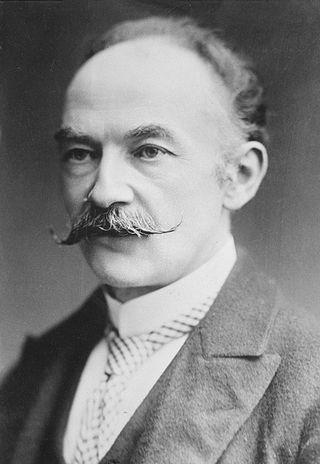
Thomas Hardy was an English novelist and poet. A Victorian realist in the tradition of George Eliot, he was influenced both in his novels and in his poetry by Romanticism, including the poetry of William Wordsworth. He was highly critical of much in Victorian society, especially on the declining status of rural people in Britain such as those from his native South West England.

Tess of the d'Urbervilles: A Pure Woman is the twelfth published novel by English author Thomas Hardy. It initially appeared in a censored and serialised version, published by the British illustrated newspaper The Graphic in 1891, then in book form in three volumes in 1891, and as a single volume in 1892. Although now considered a major novel of the 19th century, Tess of the d'Urbervilles received mixed reviews when it first appeared, in part because it challenged the sexual morals of late Victorian England.

Jude the Obscure is the thirteenth published novel by English author Thomas Hardy, which began as a magazine serial in December 1894 and was first published in book form in 1895. It is Hardy's last completed novel. The protagonist, Jude Fawley, is a working-class young man; he is a stonemason who dreams of becoming a scholar. The other main character is his cousin, Sue Bridehead, who is also his central love interest. The novel is concerned in particular with issues of class, education, religion, morality and marriage.

Far from the Madding Crowd is the fourth published novel by English author Thomas Hardy; and his first major literary success. It was published on 23 November 1874. It originally appeared anonymously as a monthly serial in Cornhill Magazine, where it gained a wide readership.

The Mayor of Casterbridge: The Life and Death of a Man of Character is an 1886 novel by the English author Thomas Hardy. One of Hardy's Wessex novels, it is set in a fictional rural England with Casterbridge standing in for Dorchester in Dorset where the author spent his youth. It was first published as a weekly serialisation from January 1886.

West gallery music, also known as Georgian psalmody, refers to the sacred music sung and played in Church of England parish churches, as well as nonconformist chapels, from 1700 to around 1850. In the late 1980s, west gallery music experienced a revival and is now sung by several west gallery "quires" (choirs).

Desperate Remedies is the first published novel by English author Thomas Hardy. It is considered a sensation novel because it contains themes of bigamy, murder, illegitimacy, blackmail, and impersonation. It was released anonymously by Tinsley Brothers in 1871.
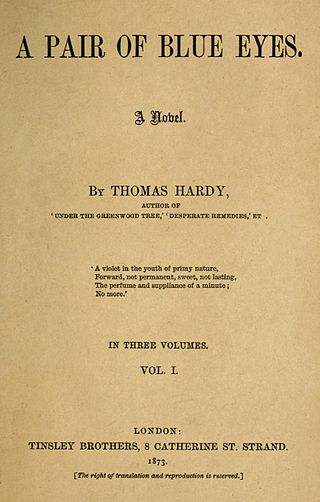
A Pair of Blue Eyes is the third published novel by English author Thomas Hardy, first serialised between September 1872 and July 1873, in Tinsley's Magazine, and published in book form in 1873. It was Hardy's third published novel, and the first not published anonymously. Hardy included it with his "romances and fantasies".
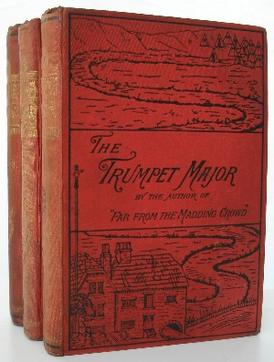
The Trumpet-Major is the seventh published novel by English author Thomas Hardy published in 1880, and his only historical novel. Hardy included it with his "romances and fantasies". It concerns the heroine, Anne Garland, being pursued by three suitors: John Loveday, the eponymous trumpet major in a British regiment, honest and loyal; his brother Bob, a flighty sailor; and Festus Derriman, the cowardly nephew of the local squire. Unusually for a Hardy novel, the ending is not entirely tragic; however, there remains an ominous element in the probable fate of one of the main characters.

Two on a Tower: A Romance (1882) is a novel by English author Thomas Hardy, classified by him as a romance and fantasy. It is regarded as one of his minor works. It is one of Hardy's Wessex novels, set in late Victorian Dorset.

Stinsford is a village and civil parish in southwest Dorset, England, about 1 mile (1.6 km) east of Dorchester. The parish includes the settlements of Higher and Lower Bockhampton. The name Stinsford may derive from stynt, Old English for a limited area of pasture. In the 2011 United Kingdom census, the parish had a population of 334.

Thomas Hardy's Wessex is the fictional literary landscape created by the English author Thomas Hardy as the setting for his major novels, located in the south and southwest of England. Hardy named the area "Wessex" after the medieval Anglo-Saxon kingdom that existed in this part of that country prior to the unification of England by Æthelstan. Although the places that appear in his novels actually exist, in many cases he gave the place a fictional name. For example, Hardy's home town of Dorchester is called Casterbridge in his books, notably in The Mayor of Casterbridge. In an 1895 preface to the 1874 novel Far from the Madding Crowd he described Wessex as "a merely realistic dream country".
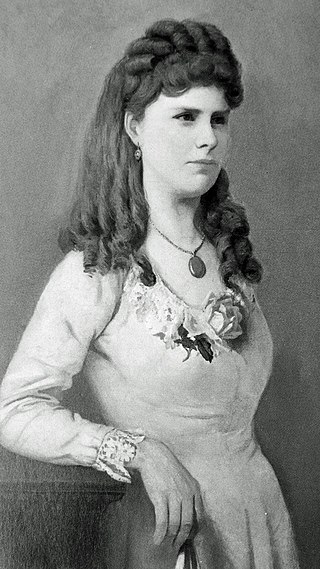
Emma Lavinia Gifford was an English writer and suffragist. She was also the first wife of the novelist and poet Thomas Hardy.
"One Night As I Lay On My Bed" is a traditional English-language folk song.

Thomas Hardy's Cottage, in Higher Bockhampton, Dorset, is a small cob and thatch building that is the birthplace of the English author Thomas Hardy. He was born there in 1840 and lived in the cottage until he was aged 34—during which time he wrote the novels Under the Greenwood Tree (1872) and Far from the Madding Crowd (1874)—when he left home to be married to Emma Gifford.
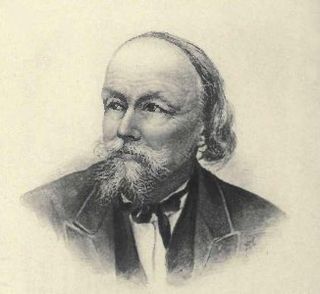
William Tinsley was a British publisher. The son of a gamekeeper, he had little formal education; but together with his brother Edward (1835–1865) he founded the firm of The Tinsley Brothers, which published many of the leading novelists of the time.

Under the Greenwood Tree is a 1929 British sound part-talkie historical drama film directed by Harry Lachman and starring Marguerite Allan, Nigel Barrie and Wilfred Shine. It is an adaptation of the 1872 novel Under the Greenwood Tree by Thomas Hardy.
Gertrude Bugler was a British stage actress of the Edwardian Era best known for acting in plays adapted by Thomas Hardy.

"The Fiddler of the Reels" is a short story by British writer Thomas Hardy. It was first published in Scribner's Magazine, volume 13 issue 4, April 1893. It was included in Life's Little Ironies, a collection of Thomas Hardy's short stories first published in 1894.
The Hardy Players (1908–1928) was an amateur theatrical company, based in Dorchester, Dorset. The novelist Thomas Hardy adapted his novels for live performance in collaboration with the group. In some cases he made major changes to the story, such as changing the ending of The Trumpet Major, truncating Return of the Native and making other changes to the text to better fit dramatisation. Hardy wrote his play The Famous Tragedy of the Queen of Cornwall specifically to be performed by the Hardy Players.

















